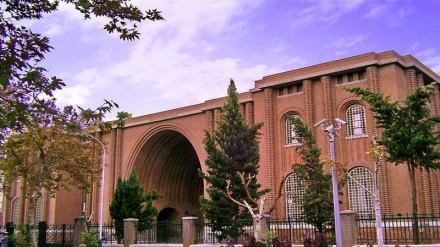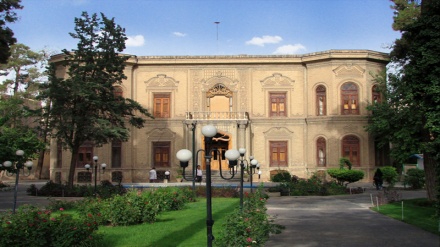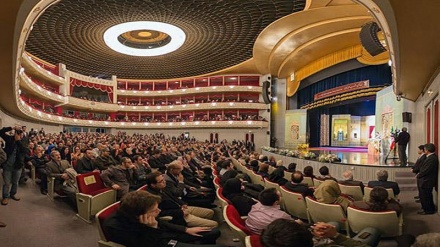Iran Your Attractive Destination (208)
In the last episode, we got to know the city of Waramin and pointed out that this city, and its neighboring age-old cities, are home to many valuable historical monuments, which have been of importance throughout the archeological studies that have been carried out in this region. In this episode, we are further familiarized with these historical works.
The city of Pishwa is within Tehran Province. It is situated at a 45-kilometer distance of the city of Tehran, and at a 10-kilometer distance of the city of Waramin, on a number of foothills. This city sits on the fertile plains of Waramin. According to archeologists, the history of city of Pishwa dates back to Paleolithic Age. The residents of this city are mainly the locals of Tehran Province. Up until the year 2010 AD, Pishwa was considered as a region on the outskirts of the city of Waramin. However, with the development of this region and its growing population, Pishwa was named as a city in that year. This city is situated en route the ancient Silk Road and Tehran-Mashhad Railway.
This city is adjacent to Iran’s central desert, and is known as one of the poles of flowers and herbal plants, nationwide. In fact, it accommodates one eighth of Iran’s green houses.
This city is also home to the Holy Shrine of Imamzadeh Jafar Al-Khari, the venerable son of the 7th Infallible Imam of the Prophet of Islam’s Household, Imam Mouza Kazem (Peace be upon him). This Imamzadeh was one of the Shia Ulema, contemporary to the ear of Imamate of the 8th Infallible Successor to Prophet Mohammad (Blessings of God upon him and his progeny) Imam Reza (Peace be upon him).
The economic mainstay of the residents of city of Pishwa has been agriculture for a long while, and the agricultural sector continues to play a crucial role in the livelihood of the locals of this city. Every year, more than 500,000 tons of agricultural goods are produced across this city’s farmlands; of which 300,000 tons are greenhouse products; some of which are exported overseas. In the year 2014 AD, the city of Pishwa was ranked first in production of agricultural goods.
Corn, wheat, and barley constitute half of this city’s agricultural products. Also, cucumbers, flowers, and herbal plants are the main greenhouse products of this city. Summer crops such as eggplants, tomatoes, squash, lettuce, cabbage, and sunflowers are also produced in this region. In the recent years, the cultivation of barberry and saffron has significantly grown in the region, while cultivation of mushrooms and aloe vera has also been taken into consideration. Also, horticulturists in this region produce pomegranate, grapes, figs, olives, walnuts, and persimmon.
Moreover, the fertile lands have set the stage for animal husbandry in this region. In more than a hundred units of livestock, which are situated in fully-mechanized complexes, a volume of 38717 tons of milk is produced per annum, which has ranked the city of Pishwa as the second largest producer of the milk across the nation.
Furthermore, apiculture holds a significant status in this region. More than three tons of honey is produced by apiculturists in this region per year. There are also several poultry units in this city, which have highly contributed to creation of jobs for the regional residents. Also, the largest ostrich breeding unit of Iran is situated in the region.
Animal husbandry and production of wool has laid the ground for production of carpets and handicrafts. Thus, the art of carpet-weaving is common across the villages in the vicinity of city of Pishwa.
The city of Pishwa was previously known as Imamzadeh Jafar, due to presence of Imamzadeh Jafar Holy Shrine in this region. The building and turquoise dome of this Imamzadeh Holy Shrine has remained from the Safavid era. The sepulcher of this Holy Shrine is made of gold and silver, and is placed on a 30-centimeter base, made of green marble stone. The inscription which is placed on the door of the old sepulcher of this Holy Shrine dates back to 944 AH. Moreover, on the inscription which is situated in the Holy Shrine, the name of Safavid King, Shah Tahmasb, and the year 956 AH have been registered.
The dome of this Holy Shrine is 21 meters in height, and 9.5 meters in diameter. It is a two-layered dome. The turquoise tiles of the outer layer of this dome have been decorated with geometrical shapes and a number of inscriptions that also insulate the dome from any possible rain and snowfall. This dome has been renovated and repaired in the year 1975 AD. The tiling, plasterworks, and cut pieces of mirror that are used for decoration, have granted significant beauty to the tall iwan of the mosque. The marketplace, alleys, and water stores are some of the main elements of urban development in the Safavid era; which have remained to this day in the ancient fiber of the city of Pishwa; some of which have maintained their age-old functions to this date.
Iraj Castle, located in the city of Pishwa, is one of the largest castles of Iran; the remains of which are evident today. This castle maintained military importance. Based on the historical items unearthed in this castle, its construction dates back to roughly 3rd Millennium BC. The length of this castle in 1214 meters, and its width stands at 1150 meters. In its northern, southern, and eastern and western corners, there were respectively 34, 42, and 36 towers.
This oblong-shaped castle maintained southern, northern, western, and eastern gateways; the northern gateway of which is directly opposite to Damavand Pinnacle. The walls of this castle are made of sun-dried mud bricks, which were up to 25 meters in height. The thickness of walls of this castle, in some parts, was between 17 to 22 meters.
Trenches which were 30 meters in width and 8 meters in depth were dug around the castle to prevent the infiltration of enemies. An aqueduct is located within this castle; the origin of which is not precisely known. The bricks used in the structure, built for this aqueduct date back to Sassanid era.
Historians believe that Iraj Castle was a military fortification, which accommodated troopers. The date of construction of this castle is unknown. This castle was enlisted among Iran’s national historical monuments in the year 2003 AD.


